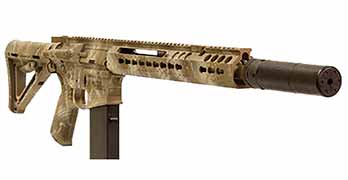What happens when you mix an experienced gun designer, successful firearms distributor, a gun sales expert and noted self-defense instructor? In this case, a new company and pistol. Say hello to the Avidity Arms PD10.
Avidity Arms is a new company born to deliver a handgun designed for the concealed carry, self-defense market. The brainchild of Mike Sodini, Brad Thomas, Rafael DelValle and Rob Pincus, the PD10 started like many great American designs: on a napkin during a conversation. From those initial discussions, the pistol moved from the drawing board to the factory. Now the company is ready to pull back the curtain for a peek at the new pistol.
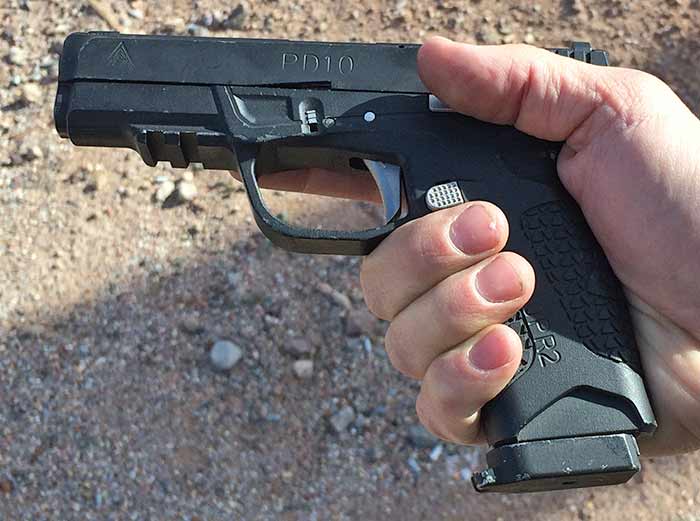
Pincus was kind enough to talk with me about the gun, and give me some insight into its development. I thank him for providing much of the information in this article.
Quick Note About the Prototype
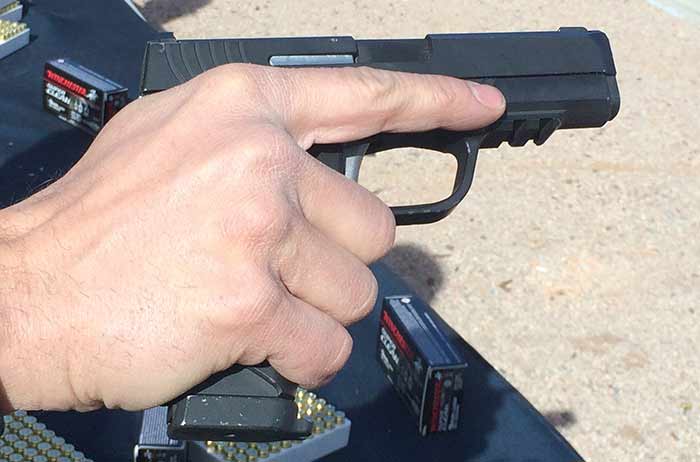
Photos in this article are of an advanced prototype gun. It has a CNC machined frame instead of the polymer one. So, if you see the finish imperfections, just keep in mind that this is not the end product. It is a working prototype that is having the snot beat out of it to find the imperfections. Additionally, some things on the prototype gun will change in the final pistol. For example, the trigger shown is not the intended final product.
General Design
In basic terms, the PD10 is a polymer-framed 9mm pistol that uses a single stack magazine. The overall gun size is likely to be compared to a Glock 19 or Springfield Armory XD-S 4.0. Yet, with a single stack magazine, the gun can be much thinner than the Glock. And since the gun is designed around the 9mm – not the .45 ACP – it’s possible the gun could be made even thinner than the XD-S.
I’ve often advocated for a single stack version of the Glock 19, so this general design envelope is interesting to me.
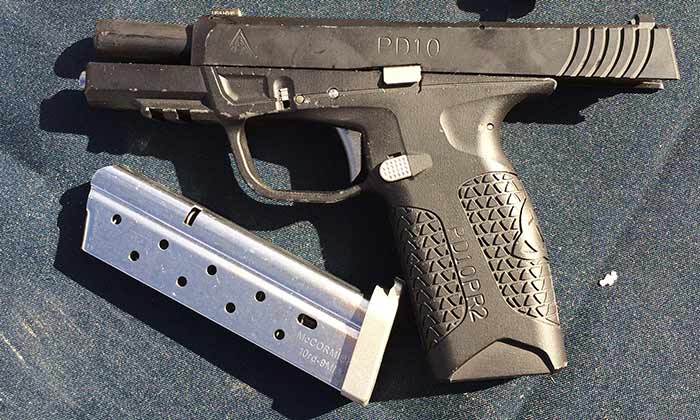
The gun is striker-fired and has no external safeties to manipulate. There are internal safeties and a trigger block to ensure the gun does not accidentally discharge if struck or dropped.
For greater insight into the thought process that went into the design of the gun, take a look at this article written by Pincus in 2014. In it, he lays out the fundamental aspects of what the ideal personal defense gun might look like. Frankly, it sounds like he was describing the pistol Avidity Arms is now developing.
Additional Features
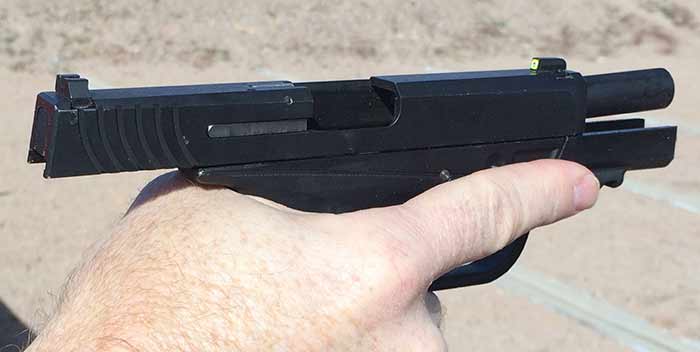
The gun will ship with the I.C.E. Claw Emergency Manipulation Sights. Both sights will be replaceable using a S&W sized cut up front and a Glock sized rear. Magazines will have the I.C.E. Claw baseplates installed.
The PD10 will have a loaded chamber indicator similar to what is found on many Ruger pistols. While I generally consider these to be superfluous, they don’t detract from the reliability in any way, so I don’t mind them.
The underside of the gun will have a short accessory rail for the addition of a light or supplemental aiming device.
Reliability and the 9mm
Designed around the 9mm cartridge, the PD10 is purpose built to be reliable in the face of a deadly force encounter. Pincus advised that the gun is in the final stages of tweaking and testing to ensure reliability, and that the gun shows great promise. With his name attached to the project, I have no doubt that he will make sure the gun is a solid performer before the first one ships.
A cornerstone of reliability in a semi-automatic pistol is feeding from the magazine. To ensure consistent feeding, a designer may start the design with the magazine and then build the gun around it. In this case, the PD10 was built around an existing magazine design: the 10-round 1911 9mm magazine.
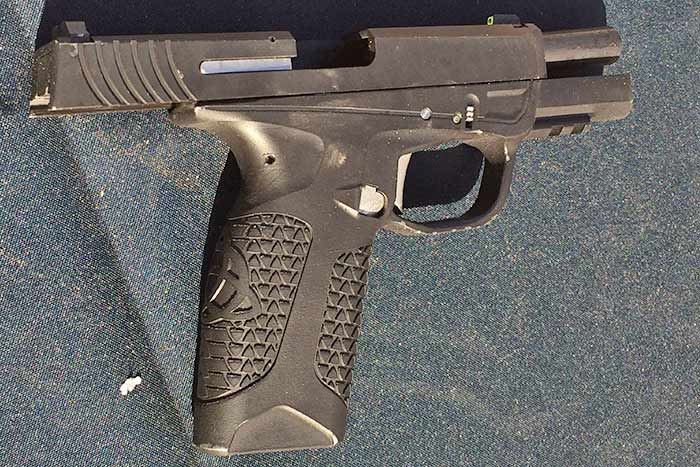
By building the gun around the 1911 magazines, Avidity Arms ensured they would be working with a proven design. This is important with any caliber, but especially so with the 9×19 cartridge.
The 9mm round has a tapered case instead of a straight walled case. Without getting too deep into the physics, the rounds have a propensity to curve when stacked in a magazine. To see that in real life, lay 10 or so 9mm rounds next to each other on a table and you can see how they start to form a semi-circle.
Tilting of the cartridge in the magazine can cause feeding problems, but these are problems that can be overcome. Starting with an existing magazine design ensures that the company won’t waste time trying to reinvent the wheel.
The gun will ship with the reputable McCormick magazines. The bottom of the frame is scalloped for easier grip on the magazine should it need to be stripped from the gun in a double feed situation.
Pricing and Availability
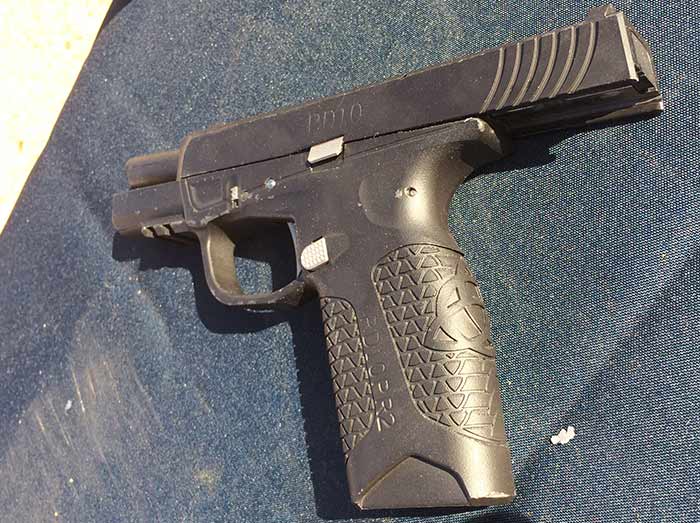
Pincus advised that the pistol has been under development for about two years, and the first guns should ship later this year. From my observations in the past, 2-3 years is normal for product development in this industry.
Made in the United States, the guns will have an attractive price point: $499. As with many firearms, I would expect the guns to sell for less in the store: maybe around $450.
Update – September 2016
The PD10 is still in development and looks to start shipping in early 2017. Rob Pincus recently released the below video which depicts a pre-production gun built to production specifications:
Pincus is advising the MSRP will be $499, so it sounds like they’ve been able to keep costs in line with projections. All of the previously described features – from the Chip McCormick mags to the AmerigGlo front sight – are all in the final spec gun.
I look forward to shooting one of these in a review once they become available.
Final Update
It appears the PD10 project is dead. Even if it wasn’t, at this point it is largely irrelevant. When the gun was first conceived, there was a hole in the market for a thin pistol that was roughly in the size range of the Glock 19.
Since then, guns like the Springfield Armory Hellcat Pro and the Glock 43X MOS have largely filled that gap.
Last Update: October 17, 2022



